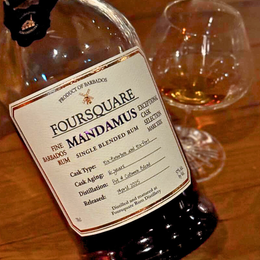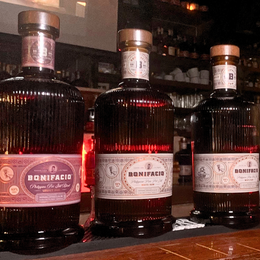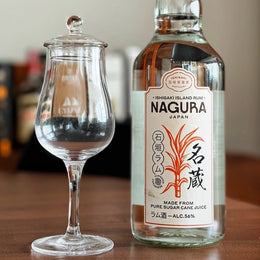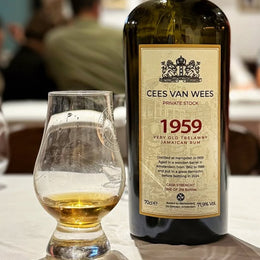You can imagine my surprise and excitement when this 1950s Caroni Navy Rum 75 Proof came into my possession. This is one of the official bottlings from Tate & Lyle when they owned both the Caroni distillery and sugar plantation.
There’s not much information available on the rum’s marques, its age, and its origin of aging. Thankfully, @ange_canessa shared with me some details, that the Caroni Navy Rum was likely a blend of both Heavy (HTR) and Light (LTR) style rums, with the HTR distilled from the historic cast iron pot still. Luca also mentioned that these OBs are very rare, as Caroni likely bottled only 0.001% of their rum produced, with the rest being sold as bulk rum to the Royal Navy and other rum brokers.

(Image Source: @weixiang_liu)
While I might not have opened this bottle, I was fortunate to have tasted the same rum at 90 proof during The Rum Show a couple of months back. So my tasting notes below will be based on the 90 proof.
On the nose, you could tell that Caronis were pretty special, considering it was distilled in the 50s-60s. Lots of rancio notes, slightly earthy, smoke meats, mushrooms. Then it opens up a bit, giving way to lighter fresher notes of mint and chinese herbal candy, coupled with a dash of honey. 30-40 minutes in and the nose gets even lighter and fruitier still, with subtle notes of jackfruits and rich caramel.
While the nose promises so much goodness, the palate falters. There isn’t much structure, starting off slightly flat and thin, although there is a slight astringency that resembles a port or sherry cask aged rum. The middle palate gives a bit more, with those same rancio, smoky meat notes that were in the nose. The finish is short, but it’s also here where the dirty petrol notes we so often relate to HTR Caronis start to show, albeit just the tiniest fraction of it, and if I dig deep enough, little hints of unripe jackfruits and cane juice. If not for those rancio notes, I’d place a vintage Caroni blend quite closely with a Cuban style column still light rum.
That said, it’d be unfair to compare vintage Caronis to those that we get from Velier today as they were made in very different eras in rum production. All in all, considering this was distilled and blended in the 50s, I’d say Caroni rums are indeed deserving of the accolades and high praise in today’s market. Whether those secondary market prices are warranted though is a whole other story.


Your occasional rum addict!







